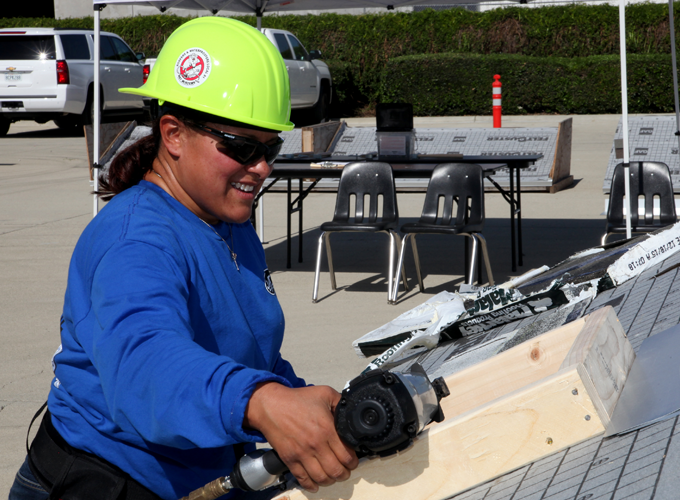Protecting the Home’s Exterior and Gardens During Roof Installation

By IKO Industries.
Clean work site makes for safer work conditions and satisfied customers.
When homeowners contract with a roofer, naturally their main concern is that they get a properly installed roof. Yet one of the most common homeowner complaints about roofing contractors is the mess occasionally left behind. In some cases, landscaping around the home can be damaged.
It’s sometimes obvious during discussions and negotiations with the customer that they value their prized rose bushes – on these jobs you’ll know to take extra precautions. But it doesn’t always come up in conversation. As the old adage goes, “better safe than sorry,” so it’s wise to maintain a clean job. A clean work site is a safer site for your crew, the homeowners, and any neighbors or visitors.
John-Michael Dykstra of Dykstra Bros. Roofing & Siding says, “We learned very quickly in the roofing business that leaving the work property clean and undamaged is a priority for almost every homeowner, so we don’t take any chances. We always protect the landscaping. And as we state on our website, we perform a magnetic sweep of the area after every workday. Our customers appreciate this attention to detail around their home.”
Here are some reminders and tips to help minimize any damage and mess on a reroofing project:
- Take a walk around the home before the project starts and check for any damage or issues. Much like when you rent a car, it’s prudent to see if there are any pre-existing problems. In some cases, it might be a good idea to take a short video with your phone or a few pictures. If your crew is unfairly accused of something after the job is done, you’ll be glad you have the images. Additionally, it is a good idea to document and bring any pre-existing damage you notice to the homeowner’s attention.
- Make a note of anything around the house that might need special protection, such as: hot tubs, pools, children’s play areas and vegetable gardens. Discuss the same with the homeowner, as they may be able to point out particularly treasured flowers or newly planted areas. Where necessary, allow for extra tarps and such to cover these items. As the timing for the job approaches, keep in mind the wind forecasts. A pool that seemed a safe distance away previously may now be in jeopardy of wind-blown roofing debris.
- The trash bin should be positioned appropriately to allow the best ‘flow’ of old roofing materials off the roof, most often on the home’s driveway. Use protective plywood sheets to ensure the driveway is not dented, scraped, or otherwise damaged. As well, if the new roof materials are staged at the project prior to work starting, the same rule applies. It may be wise to lay some plywood under the full pallets of shingles to avoid yard/driveway damage. Preferably, materials should be stacked on the driveway or other hard surface to avoid killing the grass or leaving ruts in the yard.
- Drape tarps over gardens and grassy areas immediately below the roof work area. For smaller plants, which need the most protection, place the tarps over some lengths of lumber carefully angled/leaning against the house walls. Mature shrubs and trees are usually robust enough to withstand any bits of debris that come their way.
- Of course, your crew will have the nails, nail guns, pry bars, ladders and other tools needed to do the actual roof installation. But also ensure they have all the tools necessary to keep the site clean, such as brooms, a couple of smaller garbage cans, rakes, etc. If there is a lot of clean paved space around the site (like patterned concrete) a shop-vac can even come in handy to get roof granules and other debris that escape the tarps. And don’t forget the magnetic sweeper to go over the entire area for wayward roofing nails.
- It is easiest to keep the site clean if the bulk of the debris is gathered after the old roof is torn off, before the new roof is installed. If the job takes longer than a day, clean up after every day’s work as debris can be a trip hazard in the dark of night, and/or wind could come up overnight, dislodging tarps, potentially making a small mess a big one.
Installing the shingles is only part of a homeowner’s expectations. Protecting plants and shrubbery takes only a few minutes, but will show your customer you are a responsible, diligent professional who takes care of the details.
Learn more about IKO Industries here.
Editor’s note: This article first appeared on the IKO blog and can be viewed here.























Comments
Leave a Reply
Have an account? Login to leave a comment!
Sign In